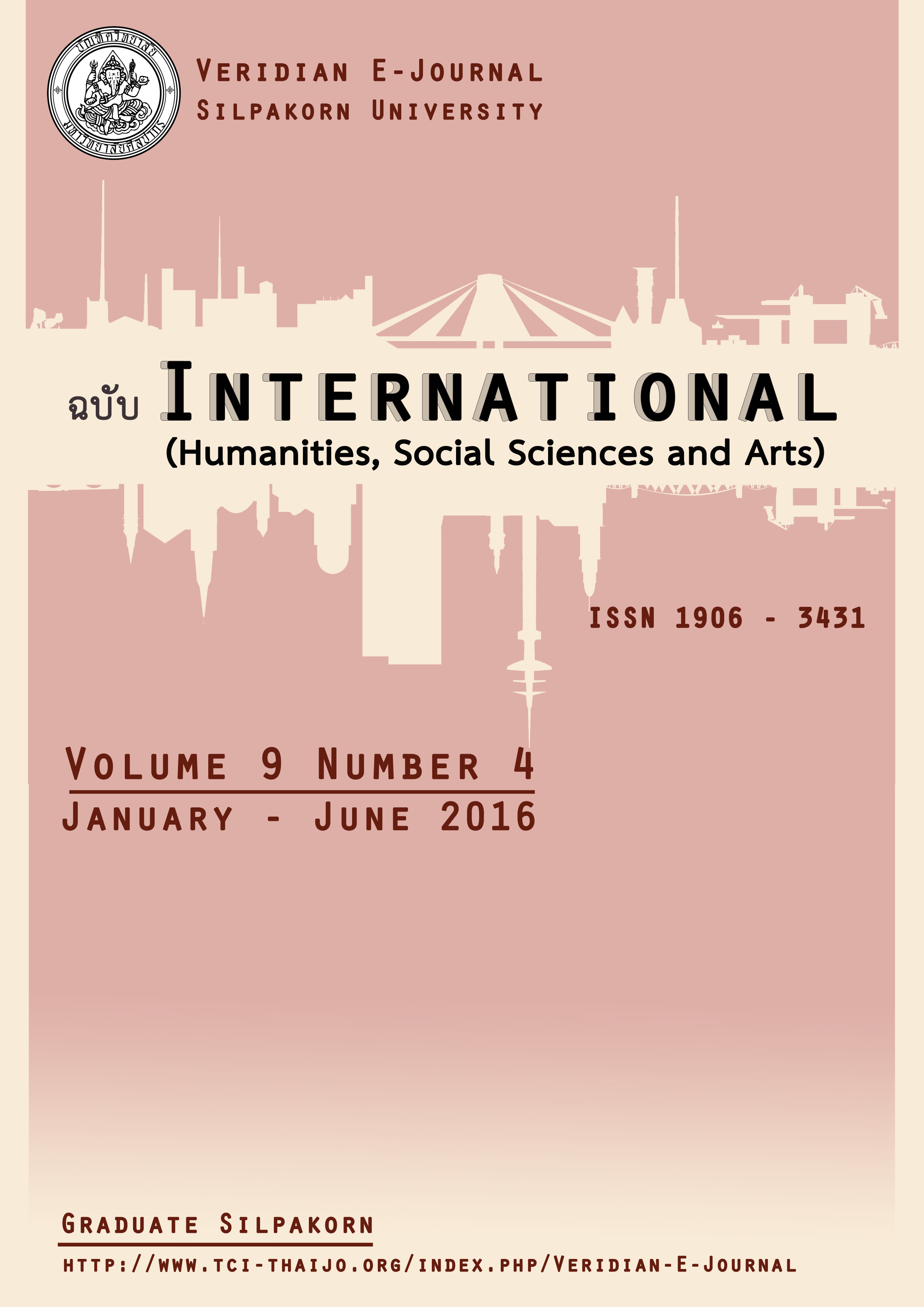Migration and Settlement of Tai Kheun Ethnic Groups in Thailand
Main Article Content
Abstract
This report is intended to study the migration and settlement of the Tai Kheun ethnic groups in Thailand. The tools which are used in this study are the observation, In-depth interviews and a group discussion. The main informants are village headmen, monks, teachers, sophists, villagers, village leaders, elderly and / or academic scholars in Wat Nantharam community, Wat Takradas community, Wat Simaram community, Baan Ton Haen Noi community and Wat Chaya Lang Ka community. A data collection is divided into 3 parts which are 1) the documents and related researches 2) field data collection and 3) content inspection which are analyzing data by using a content analysis to separate issues and to split into categories. The study found that there are 5 main Tai Kheun’s migration paths which are 1) from Chiang Tung town pass through Chiang Dao town to Chiang Mai town 2) from Chiang Tung town pass through Saad town and Fang town to Chiang Mai town 3) from Sib Song Punna town pass through Chiang Tung town, Saad town, Viang Pha Pao town, Doi Saket district to San Kamphang district 4) from Chiang Tung town pass through Saad town, Chiang Mai town to Sanpatong district 5) from Chiangtung town pass through Tachileik town to Doi Saket district by dividing the migration into 2 times. The first period of immigrating to Chiang Mai town is before B.E. 2348 to look for a trade and new lands. The second period of immigrating is in the Keb Puk Sai Sa Keb Pha Sai Muang era to reconstruct Chiang Mai town. During those 2 migrations, most of the migrants are moving from a city to a rural area because Chiang Mai is a deserted town at that time. According to the migration of Tai Kheun’s settlement, the community is located in different areas both in lowlands and nearby water sources to use the water for agriculture. The forms of settlement are in distributed and semi patterns. When there is more flourishing, the agricultural areas are decreasing accordingly. The increasing of dwellings and commercial businesses are affected the migration of Tai Kheun’s settlement to be in a cluster settlement.
รายงานนี้มีจุดประสงค์เพื่อศึกษาการเคลื่อนย้ายและการตั้งถิ่นฐานของกลุ่มชาติพันธุ์ไทขึนในประเทศไทย เครื่องมือที่ใช้ ได้แก่ แบบสังเกต การสัมภาษณ์เชิงลึก และการสนทนากลุ่ม ผู้ให้ข้อมูลหลักประกอบด้วยผู้ใหญ่บ้าน กำนัน พระสงฆ์ ครู ปราชญ์ชาวบ้าน ผู้นำกลุ่มในชุมชน ผู้สูงอายุและ/หรือนักวิชาการ ชุมชนที่ศึกษา ได้แก่ ชุมชนวัดนันทาราม ชุมชนวัดท่ากระดาษ ชุมชนวัดสีมาราม ชุมชนบ้านต้นแหนน้อย และชุมชนวัดชยาลังการ์ การเก็บรวบรวมข้อมูลแบ่งเป็น 3 ระยะ คือ 1) การศึกษาเอกสารและงานวิจัยที่เกี่ยวข้อง 2) การเก็บรวบรวมข้อมูลภาคสนาม และ 3) การตรวจสอบเนื้อหา วิเคราะห์ข้อมูลโดยใช้ Content analysis แยกประเด็นแล้วสรุปเป็นหมวดหมู่ ผลการศึกษาพบว่า ชาวไทขึนมีเส้นทางการอพยพเคลื่อนย้าย 5 เส้นทางหลัก คือ 1) จากเมืองเชียงตุง ผ่านเมืองเชียงดาว สู่เมืองเชียงใหม่ 2) จากเมืองเชียงตุง ผ่านเมืองสาด ผ่านเมืองฝาง สู่เมืองเชียงใหม่ 3) จากเมืองสิบสองปันนา ผ่านเมืองเชียงตุง ผ่านเมืองสาด ผ่านเวียงป่าเป้า ผ่านอำเภอดอยสะเก็ดสู่อำเภอสันกำแพง 4) จากเชียงตุง ผ่านเมืองสาด ผ่านเมืองเชียงใหม่ สู่อำเภอสันป่าตอง 5) จากเมืองเชียงตุง ผ่านเมืองท่าขี้เหล็ก สู่อำเภอดอยสะเก็ต โดยแบ่งการอพยพเป็นสองระลอก ระลอกแรกที่อพยพมาเมืองเชียงใหม่ เข้ามาก่อน พ.ศ. 2348 เพื่อการค้าขายและหาที่อยู่ใหม่ ระลอกสอง อพยพมาช่วงยุคเก็บผักใส่ซ้า เก็บข้าใส่เมือง เพื่อฟื้นฟูบูรณะเมืองเชียงใหม่ การอพยพทั้งสองช่วงนั้นส่วนใหญ่เป็นลักษณะการย้ายถิ่นแบบเมืองสู่ชนบท เนื่องจากเชียงใหม่ในขณะนั้นเป็นเมืองร้าง สำหรับการตั้งถิ่นฐานในช่วงแรกของอพยพ ชาวไทขึนได้ตั้งชุมชนในพื้นที่ต่าง ๆ บริเวณที่ราบลุ่ม หรือใกล้แหล่งน้ำ เพื่อใช้น้ำสำหรับการเกษตรกรรม รูปแบบการตั้งถิ่นฐานเป็นแบบกระจายและแบบกึ่งรวมกลุ่ม ภายหลังเมื่อมีความเจริญขึ้น พื้นที่การทำเกษตรกรรมลดลง มีอาคารบ้านเรือนและแหล่งธุรกิจการค้าต่าง ๆ มากขึ้น รูปแบบการตั้งถิ่นฐานของชาวไทขึนส่วนใหญ่กลายเป็นแบบรวมกลุ่ม

